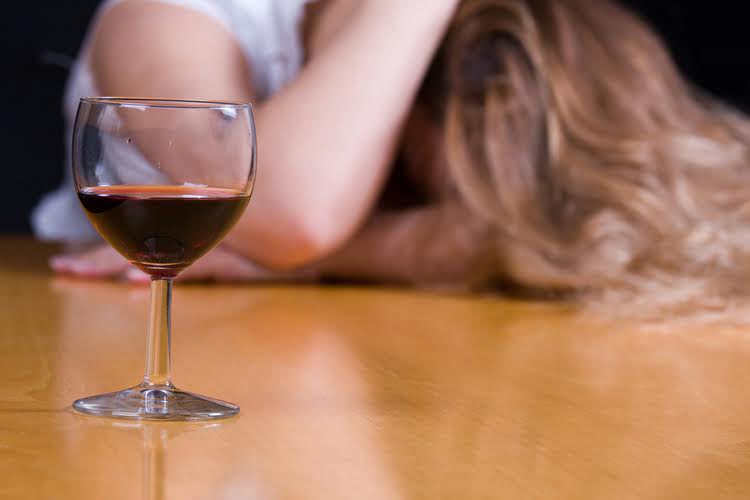Alcohol withdrawal syndrome: Symptoms, treatment, and detox time
Content
This protocol uses standardized, commercially available doses and does not rely on weight-based dosing or complex patient staging or numerical scales such as the CIWA-Ar. Most studies investigating alternative therapies for alcohol withdrawal have had sample sizes similar to or smaller than that of our study. The largest and most directly comparable study was reported in 2014 by Duby et al,10 who compared a historical control condition of treatment of AWS by physician preference with a protocol of escalating doses of diazepam with adjunctive phenobarbital. The results were similar to those of our study with regard to ICU LOS and incidence of mechanical ventilation.

Make no mistake about it, alcohol withdrawal symptoms can be severe, and in some cases fatal. It is important to note that while you may want to know how to stop alcohol withdrawals, the effects you experience when you quit consuming alcohol depend on factors such as how long and how much you’ve been drinking. Your doctor can help by prescribing medications for alcohol withdrawal that can alleviate or even stop some of your symptoms.
Assessment of Alcohol Withdrawal
However, it needs to be based upon the severity of withdrawals and time since last drink. For example, a person presenting after 5 days of abstinence, whose peak of withdrawal symptoms have passed, may need a lower dose of benzodiazepines than a patient who has come on the second day of his withdrawal syndrome. However, in the presence of co-morbidities shorter acting drugs such as oxazepam and lorazepam are used. A ceiling dose of 60 mg of diazepam or 125 mg of chlordiazepoxide is advised per day. After 2-3 days of stabilization of the withdrawal syndrome, the benzodiazepine is gradually tapered off over a period of 7-10 days. Patients need to be advised about the risks and to reduce the dose, in case of excessive drowsiness.
Less frequently, people can develop severe symptoms of alcohol withdrawal syndrome. Less-sedating medications that have been studied for treatment of alcohol withdrawal have included gabapentin and pregabalin. However, evidence to date suggests that these agents are more effective for maintaining abstinence in recovering alcoholics.
Prevention
Although the person’s condition usually begins to improve after 48 hours, withdrawal symptoms sometimes continue to increase in severity and advance to the most severe stage of withdrawal, delirium tremens. Alcohol withdrawal delirium, or delirium tremens, is characterized by clouding of consciousness and delirium. Regardless of the CIWA-Ar score, the occurrence of seizures during the alcohol withdrawal period is indicative of severe alcohol withdrawal. Seizure prophylaxis with lorazepam 2 mg intravenously must be given to all patients with seizures in the current withdrawal period at presentation and also in those with past history of withdrawal seizure. Lorazepam is more effective than diazepam in preventing seizure recurrence. Unlike diazepam brain tissue levels of lorazepam don’t fall rapidly owing to its poor lipid solubility and poor redistribution.

While some of the symptoms of alcohol withdrawal syndrome are similar to a hangover, they are not the same condition. Alcohol withdrawal syndrome and a hangover have different causes. People with alcohol withdrawal syndrome can have a wide variety of symptoms, depending on how much alcohol they drank, their body type, sex, age, and any underlying medical conditions. Alcohol withdrawal syndrome is the group of symptoms that can develop when someone with alcohol use disorder suddenly stops drinking. Researchers say the medication used for nerve pain and partial seizures can help ease symptoms of alcohol withdrawal.
Articles Related to Alcoholism
At 12 to 48 hours following the last ethanol ingestion, the possibility of generalized tonic–clonic seizures should be anticipated, occurring in 3-5% of cases. Meanwhile, none of the earlier withdrawal symptoms will typically have abated. Seizures carry the risk of major complications https://ecosoberhouse.com/ and death for the alcoholic. Detoxification is the process of weaning a person from a psychoactive substance in a safe and effective manner by gradually tapering the dependence producing substance or by substituting it with a cross-tolerant pharmacological agent and tapering it.
Why do we give thiamine to alcoholics?
Thiamine deficiency is particularly important because it can exacerbate many of the other processes by which alcohol induces brain injury, as described in other articles in this issue of Alcohol Research & Health.
Until such time as more data are available to support the use of other agents over the benzodiazepines, they will remain the treatment of choice. A more recent article on outpatient management of alcohol withdrawal syndrome is available. An alternative adjunctive medication useful in patients with refractory DT is haloperidol given in doses of 0.5-5 mg by intramuscular route every min or 2-20 mg/h while continuing to give diazepam mg every 1-2 h. Newer antipsychotics like risperidone cure for alcohol withdrawal symptoms (1-5 mg/day) or olanzapine (5-10 mg/day) may have a better safety profile than haloperidol (2, 5-10 mg/day) and are preferred as adjuncts to benzodiazepine treatment. A review by Hack et al. suggests that a high requirement of intravenous diazepam with poor control of withdrawal symptoms is a marker of non-response of DT to benzodiazepines. In the elderly, alcohol may have a greater impact on the central nervous system because of increased permeability of the blood-brain barrier.

Lascia un commento